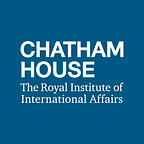Syrian Ceasefire: Five Things You Should Know
Late on Thursday night an agreement was reached between the 17 members of the International Syria Support Group (ISSG) to seek a nationwide ‘cessation of hostilities’ to begin in a week’s time. Chatham House experts tell you what you need to know.
(1) This is an attempt by international powers to impose a peace on Syria after the failure of UN efforts to negotiate a peace.
The International Syria Support Group does not include either the Assad government or the Syrian opposition. Until they can be convinced to implement it, the agreement remains progress on paper only. We have seen agreement in the international community on these issues before — in UN Security Resolution 2254 — but these terms were simply never implemented.
(2) The agreement has been spurred on by two significant developments on the ground.
The first is that the regime, backed by Russian airstrikes, has made significant gains around the key city of Aleppo. Secondly, there have been reports of Saudi Arabia and Turkey planning deployments in Syria. For Russia, an agreement now allows it to freeze its gains on the ground as well as avoid a larger regional conflict with Saudi Arabia and Turkey.
(3) If the deal holds it will immediately save lives.
There are at least seven priority areas currently besieged by parties to the conflict that will receive life-saving assistance as soon as the terms of the deal are implemented. The current plan is that Russia would airdrop supplies to these areas. There are a further 107 areas that have not been receiving any aid from the UN because the regime has been blocking access, which could open up if the deal is honoured.
(4) Airstrikes against terrorists are to continue.
The ‘cessation of hostilities’ excludes airstrikes against ISIS, Al-Qaeda affiliate Jabhat al Nusra and “other groups designated as terrorist organizations by the United Nations Security Council”. This is problematic as there is no agreement between the powers as to what counts as a terrorist group. Jaysh al Islam and Ahrar al Sham are key members of the Syrian opposition but are considered terrorists by Russia. If Russia continues to strikes these groups, the cessation of hostilities is likely to collapse.
(5) Assad stays — for now.
The agreement envisages a political negotiation leading to a new constitution, and elections in which the refugees could vote. But there are few, if any, precedents in the region for constitutional change bringing real political change, without a change of ruler taking place first.
